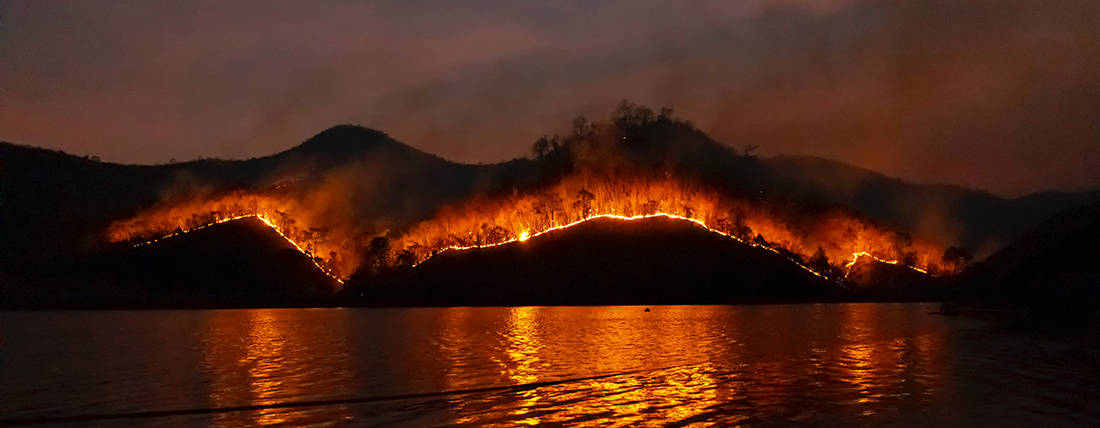


It is fire season in the West, but thankfully you would not know that by gazing out your window in much of Idaho this summer. Sure, we read about major fires in California, Alaska, Oregon and Washington, but thus far 2015 has not shaped up too badly in Idaho. We are lucky as more than 5.6 million acres have burned in the U.S. through July 29, according to the National Interagency Fire Center. The total for all of 2014 was about 3.6 million acres.
According to data compiled by that same agency, approximately 147 million acres have burned in the U.S. (mostly in the West) over the last 30 years. Not all of this is on federal land, as once fires start they tend to spread. The scale of this disaster is enormous and the consequences profound. Federal firefighting costs over this same period, in 2015 dollars, were $36.9 billion, and the trend suggests a four-fold increase in real costs per year as fires have grown larger and more destructive. It is hard to enumerate all of the terrible consequences of the fires out West.
But let us try.
Wildfires in the U.S. release about 290 million metric tons of carbon dioxide, according to an estimate from the National Science Foundation. Over the past 30 years the average annual acres burned more than doubled from an average of 3.2 million from 1985 to 1999 to 6.6 million from 2000 to 2014. That incremental increase alone released more than 1 billion and perhaps up to 2 billion metric tons of carbon dioxide into the atmosphere, killed millions of animals, fouled the air, damaged rivers, streams and lakes, burned homes, and decimated rural livelihoods. Of course, we can’t eliminate all wildland fires, but wouldn’t a targeted reduction to the levels in the 1980s and 1990s seem reasonable?
When you raise this issue with some members of the environmental community, they blame global warming and the lack of appropriate funding. We rarely hear anyone mention the correlation between the decline of active land management, including logging, and the resulting fires. We are expected to behave like ostriches and simply bury our heads by ignoring what is obvious. This response from some in the environmental community is a necessary component of their ideological commitment to maintaining the federal government’s “headlock” on federal lands.
Naturally, when you broach the notion of transferring federal lands to states — simply from a land management perspective — the response is “you will just sell the lands.” Residents of Idaho ought to note very few critics of transfer defend federal land management practices. So their answer is “no” to transfer and therefore “yes” to our federal landlord’s mismanagement.
Even those skeptical of transfer ought to understand the notion that unless we maintain the pressure on the federal government, with the political will that federal land transfer conveys, Western states will have no leverage whatsoever to improve federal land management practices.
It is in this spirit that Rep. Raul Labrador introduced the Self-Sufficient Community Lands Act. This innovative bill would not transfer ownership of federal lands to the states, but would establish community forest demonstration areas that would be managed locally. This act would set aside up to 2 percent of the acres in the National Forest Service system, yet it was met with a blaze of hostility from opponents.
Many of these opponents, such as Rick Johnson of the Idaho Conservation League, believe that we need “collaboration” to improve forest health. The results indicate otherwise. After a lengthy collaborative process on the Lost Creek-Boulder Creek Project, the agreement is in the process of being scuttled by a lawsuit from environmental groups. This is hardly the only example.
An objective review of the results of ongoing federal land management with the increase in acres burned, restrictions on access and use, and the decline in land health cries out for a management overhaul. Those opposed to local management have it backward; they are operating based on ideology, and those seeking to change the paradigm are the pragmatists.
This post was first published by the Idaho Statesman.

